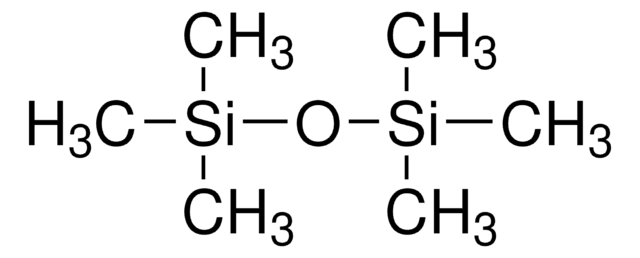87920
Tetramethylsilane
analytical standard, for NMR spectroscopy, ACS reagent
About This Item
Recommended Products
grade
ACS reagent
analytical standard
for NMR spectroscopy
Quality Level
vapor pressure
11.66 psi ( 20 °C)
assay
≥99.5% (GC)
form
liquid
autoignition temp.
842 °F
refractive index
n20/D 1.358 (lit.)
n20/D 1.359
bp
26-28 °C (lit.)
mp
−99 °C (lit.)
density
0.648 g/mL at 25 °C (lit.)
suitability
suitable for NMR (spectroscopy)
application(s)
environmental
format
neat
storage temp.
2-8°C
SMILES string
C[Si](C)(C)C
InChI
1S/C4H12Si/c1-5(2,3)4/h1-4H3
InChI key
CZDYPVPMEAXLPK-UHFFFAOYSA-N
Looking for similar products? Visit Product Comparison Guide
General description
Application
signalword
Danger
hcodes
Hazard Classifications
Flam. Liq. 1
Storage Class
3 - Flammable liquids
wgk_germany
WGK 3
flash_point_f
-16.6 °F - closed cup
flash_point_c
-27 °C - closed cup
ppe
Eyeshields, Faceshields, Gloves
Choose from one of the most recent versions:
Already Own This Product?
Find documentation for the products that you have recently purchased in the Document Library.
Customers Also Viewed
Our team of scientists has experience in all areas of research including Life Science, Material Science, Chemical Synthesis, Chromatography, Analytical and many others.
Contact Technical Service









